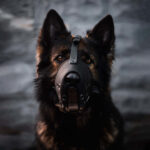CIA Risk Assessment Method: The Unseen Architecture of Covert Ops and Everyday Life
Risk assessment, a term that might strike as buzzword-laden corporate jargon to some, but for a Central Intelligence Agency operative in the field, it’s an integral part of their mental toolkit.
The overall process of identifying, analyzing, and evaluating risks. It’s a systematic way of understanding the potential dangers associated with any action or situation, assessing the potential outcomes and designing mitigation strategies. –Excerpt
It’s an activity that is deeply interwoven into the fabric of an operative’s daily routine, providing a roadmap for decision-making under conditions of uncertainty and potential harm.
To illustrate, let’s imagine a CIA operative working undercover in a foreign country. Their mission is to acquire sensitive information that is crucial to national security. The operative must engage with multiple parties, all while remaining inconspicuous. Here, the operative would employ risk assessment by identifying potential threats (e.g., surveillance detection, information leaks, hostile entities), analyzing the potential impact and likelihood of each, and finally evaluating whether the risk is tolerable or requires mitigation.
But risk assessment is not limited to the clandestine world of intelligence. It actually comes in five flavors, each offering a different perspective and degree of detail.
Qualitative Risk Assessment: This is a subjective assessment based on the experience and intuition of the assessor. It is often used when there is a lack of hard data or when the situation requires rapid decision-making.
Quantitative Risk Assessment: This type involves numerical estimates of the probabilities of specific outcomes and is often used when accurate data is available, making it more objective than qualitative assessments.
Scenario-based Risk Assessment: Here, a specific scenario is imagined, and the potential outcomes are assessed. This is often used in complex situations with multiple variables.
Peer Risk Assessment: This involves assessing the risks faced by similar entities or individuals to inform one’s own risk assessment.
Asset-based Risk Assessment: This method focuses on the potential risk to specific assets, whether they’re physical (like a building) or intangible (like reputation).
The Process of Risk Assessment Consists of 3 Primary Steps:
Risk Identification: This involves spotting potential sources of harm. For our operative, this could mean identifying individuals who might detect their true identity.
Risk Analysis: This step assesses the likelihood of each risk occurring and the potential impact if it does. Our operative would weigh the chances of being exposed against the potential fallout.
Risk Evaluation: The final step is deciding whether the level of risk is acceptable or if there are ways to mitigate it. If exposure risk is too high, the operative might decide to adjust their strategy or implement countermeasures.
While this might all seem a bit cloak-and-dagger, these principles of risk assessment have broad applicability in everyday life, beyond the high-stakes world of espionage. In fact, we all use them unconsciously to some extent. Consider the process of deciding to drive to work or take public transport. You might identify risks (traffic, accidents, delays), analyze them (likelihood of occurrence, impact on your schedule), and then evaluate them to make the best decision.
On a larger scale, risk assessment can guide significant life decisions such as career choices, investments, or home purchases. It helps in deciding whether to pursue an opportunity (taking into account factors like potential rewards, personal fulfillment, and the likelihood of success) or how to protect yourself against a potential crisis (like saving for an emergency fund).
Risk assessment is an essential skillset in both the covert operations of the CIA and the ordinary challenges of daily life. It allows us to navigate an uncertain world with a degree of confidence, making informed decisions and mitigating potential threats. It’s more than just a strategy – it’s a way of understanding the world and our place within it.
[INTEL : Assessing The Situation’ Like a Spy]







